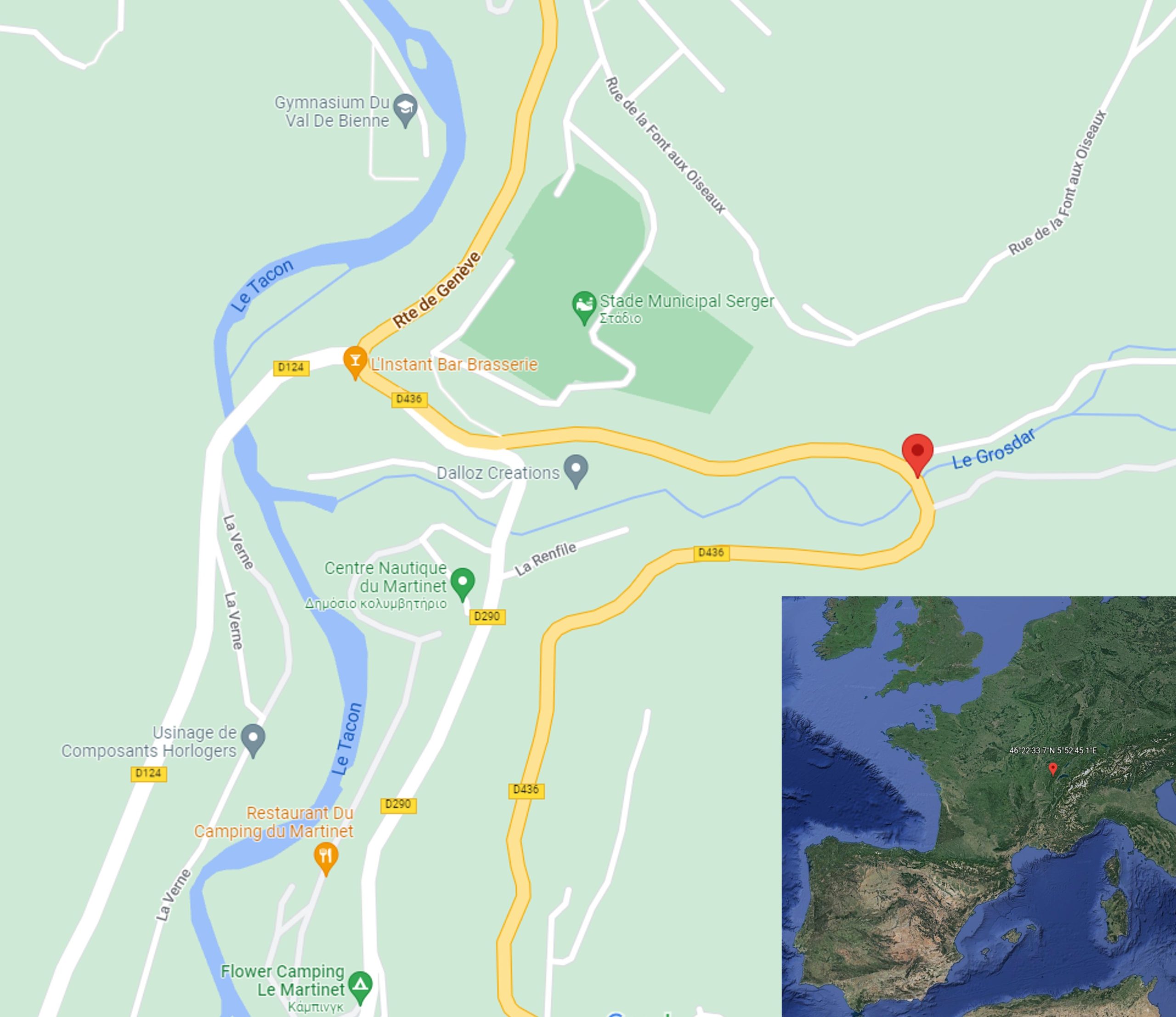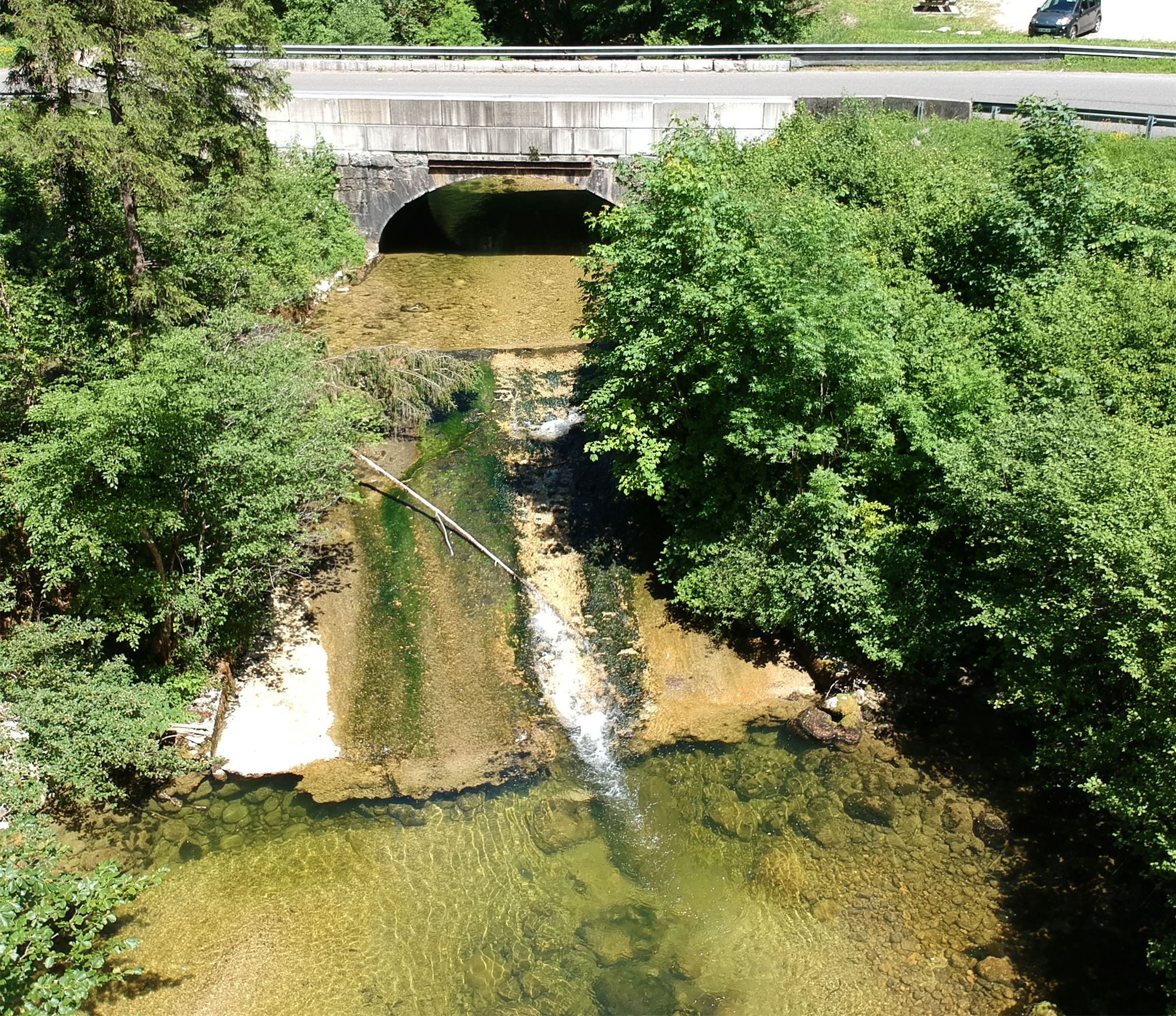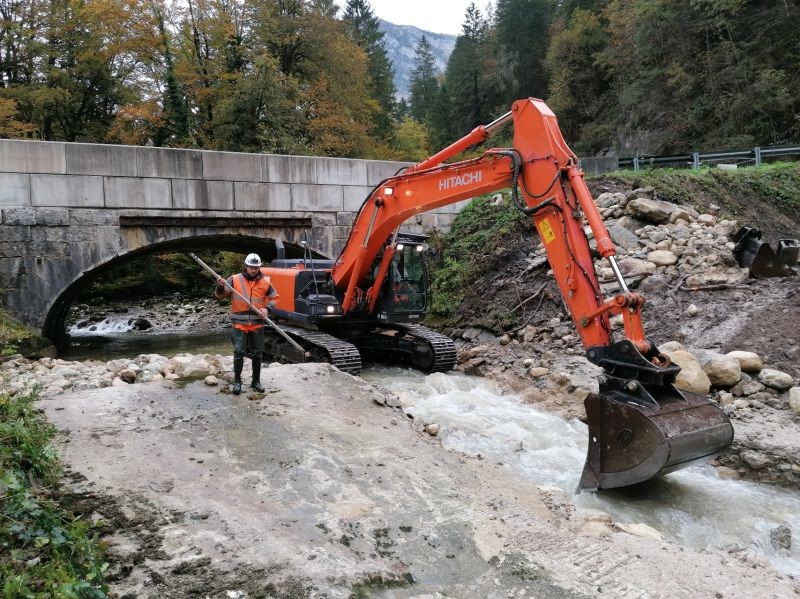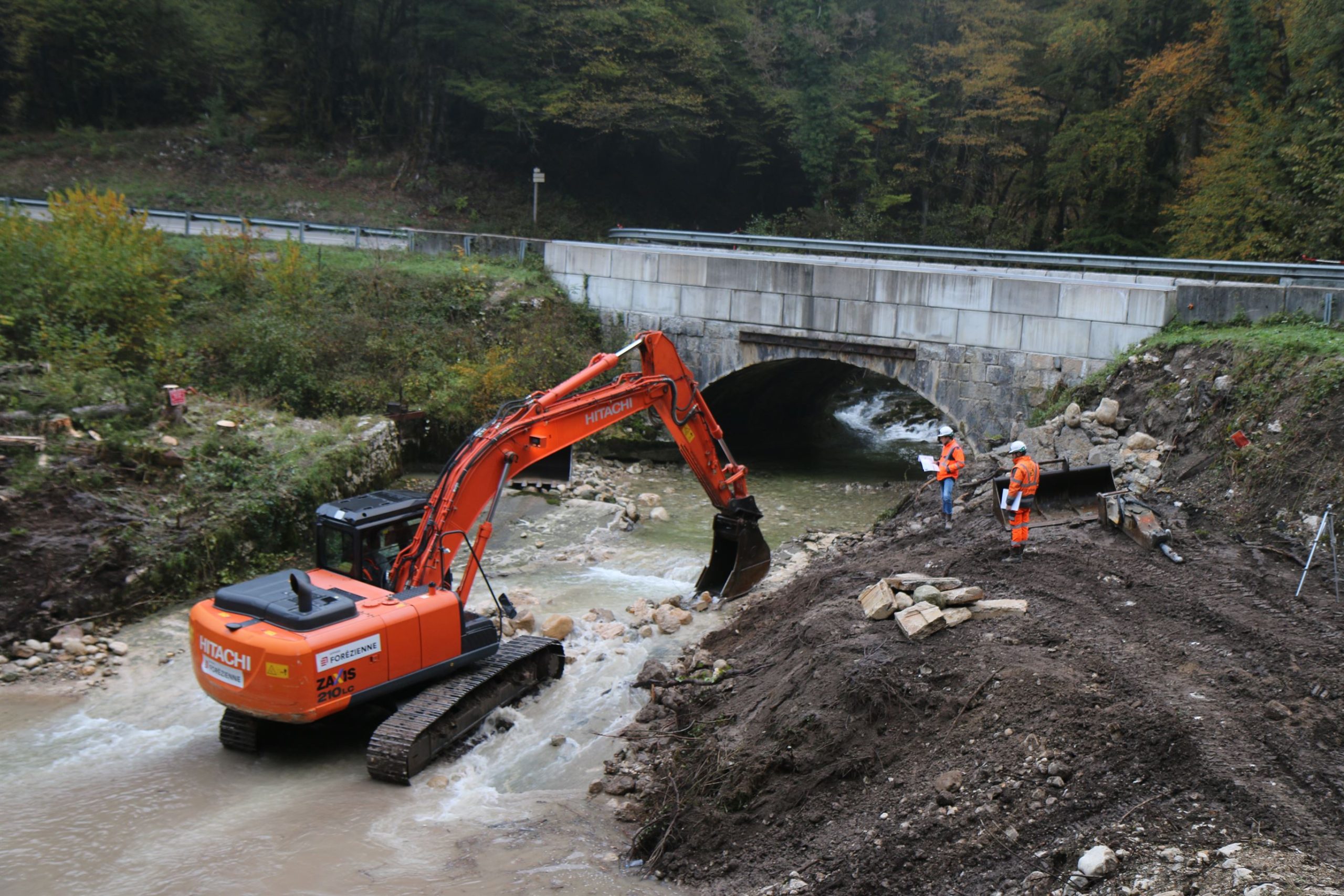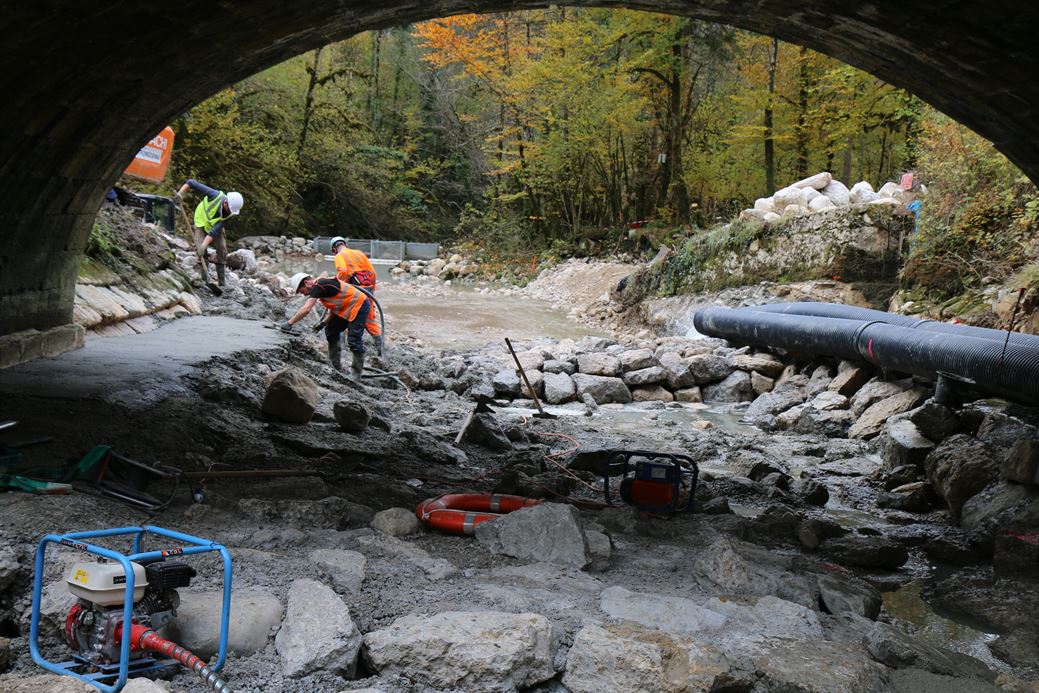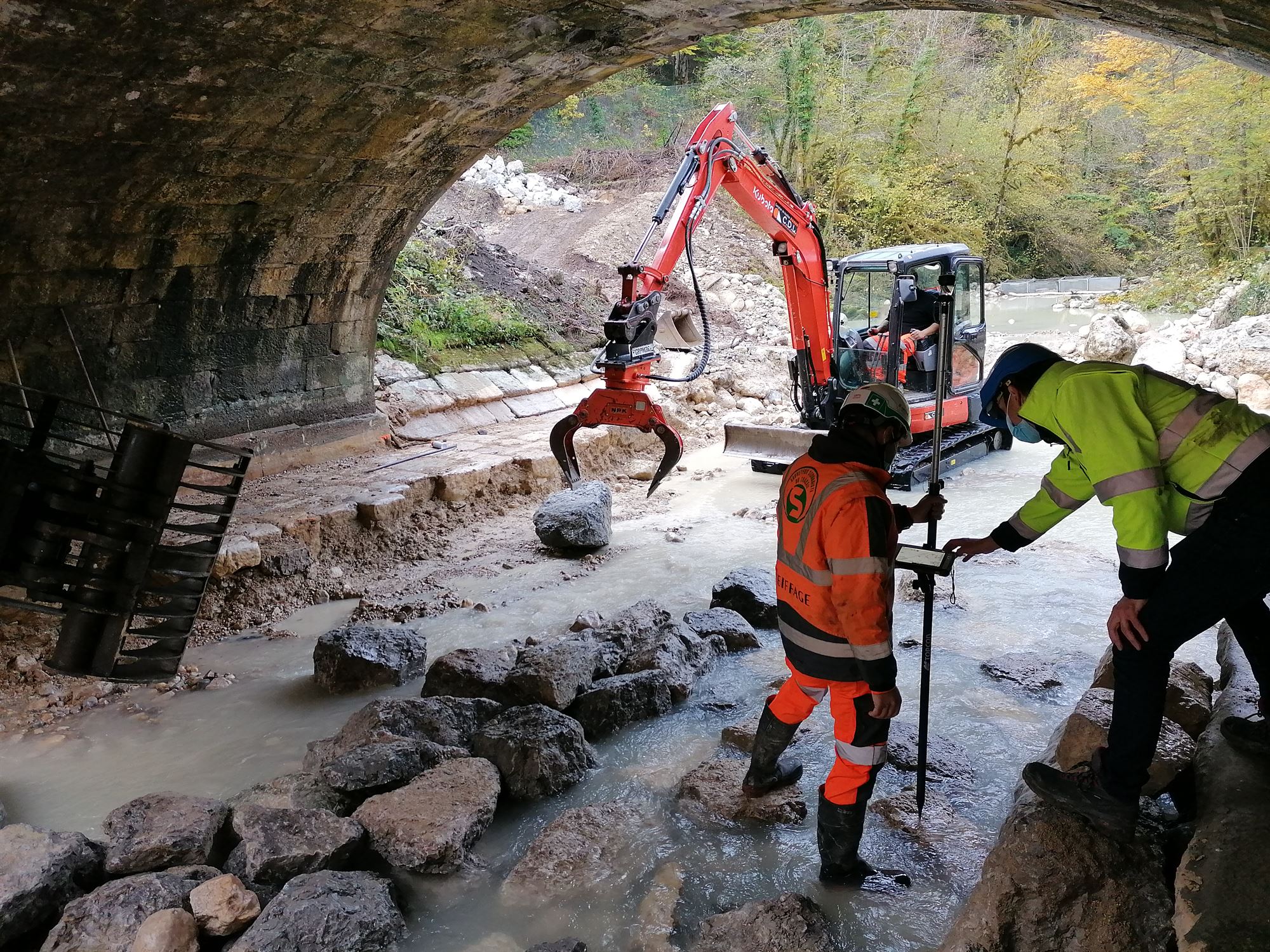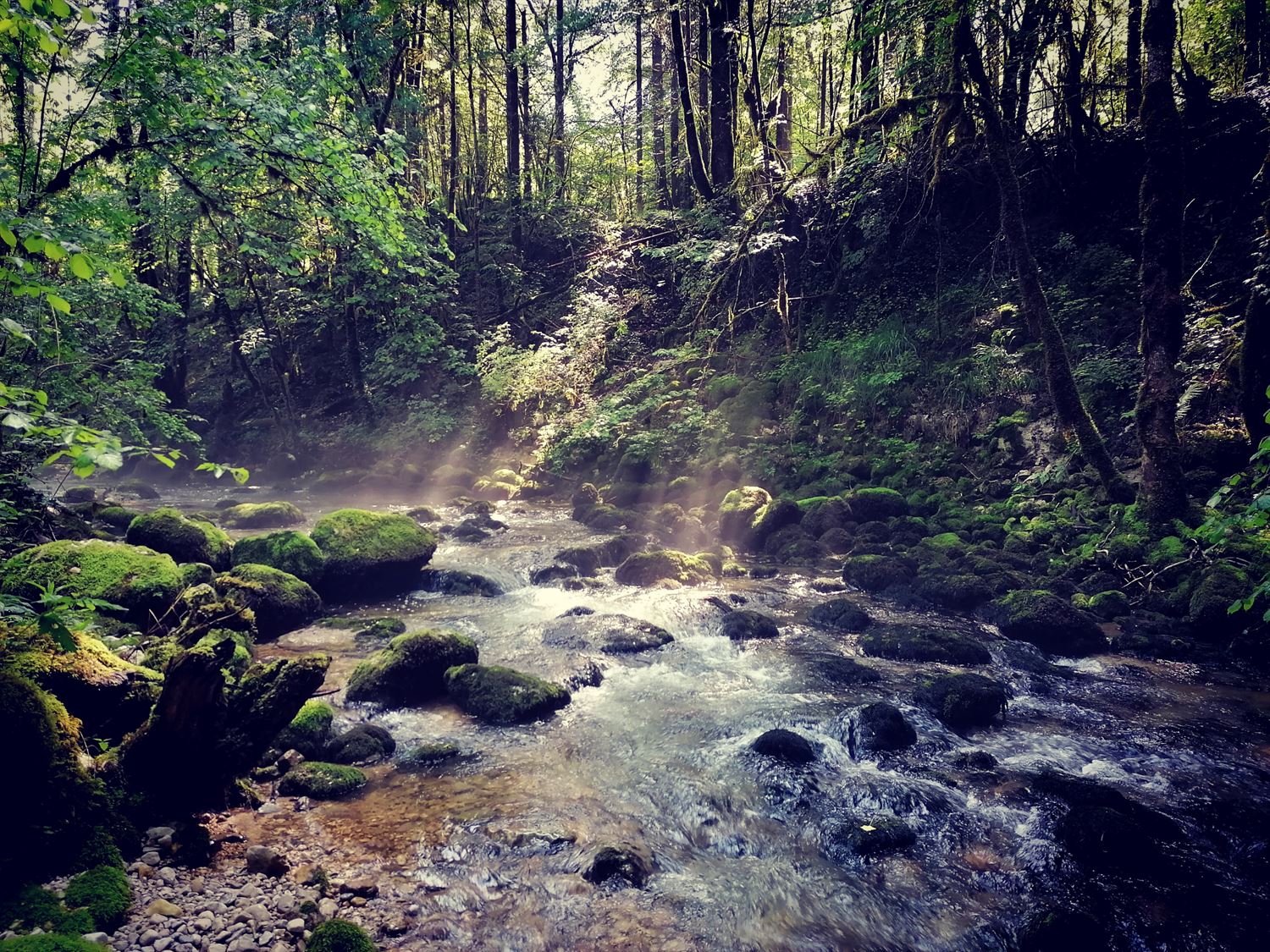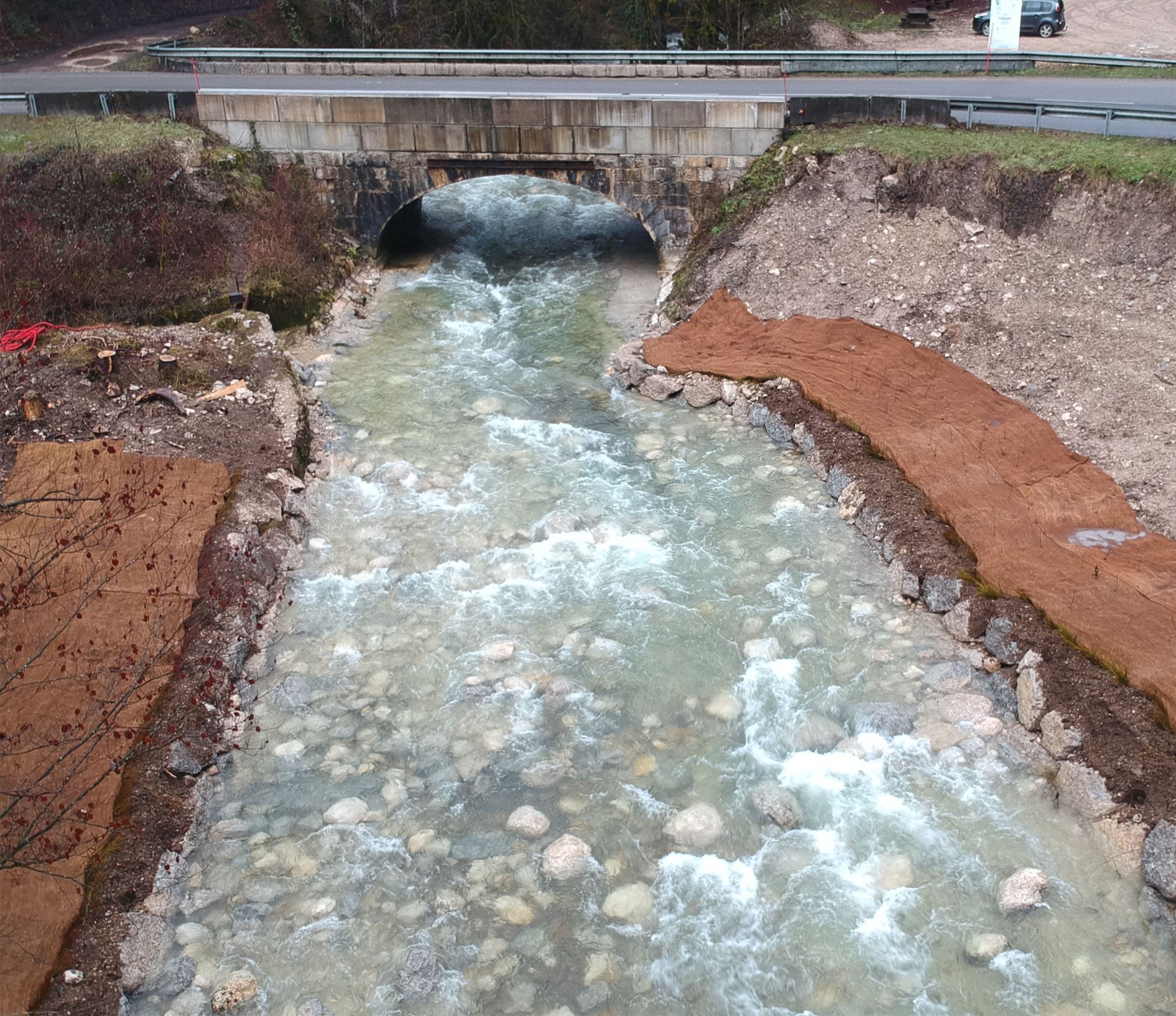Dalloz Weir demolition: a multifaceted approach to restore river connectivity, fish populations and improve industrial processes
River Tacon
River Tacon is the main tributary of River Bienne in Jura Province in Eastern-central France (Figure 1). It’s a typical and representative example of freshwater watercourse in this karstic French region. River Tacon is of great ecological importance and since 1995 is included in the Natura2000 Network (site number: FR4301331). Several valuable fish species inhabit this river, such as Bullhead (Cottus gobio) and Brown trout (Salmo trutta). However, the populations of these fish species have been decreased dramatically during the last decades, mainly due to manmade infrastructure, like dams and other river barriers, and the industrial usage of freshwater. The River Bienne watershed is highly fragmented, since more than 300 river barriers have been identified by the Parc Naturel Régional du Haut-jura. All these barriers have been classified based on their degree of connectivity relative to the existing hydrological regime using a river connectivity index (ICE).



